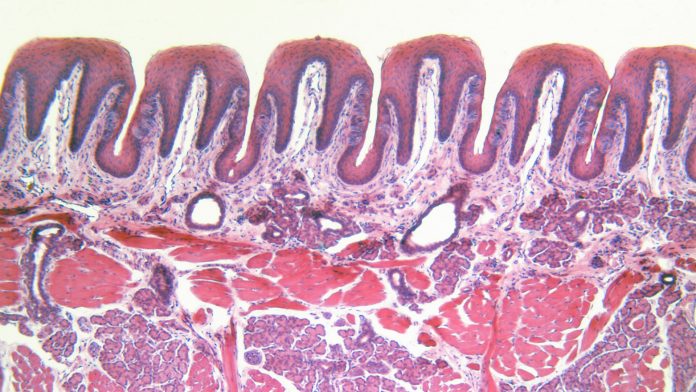Researchers led by the University of Leeds, UK, have used 3D printing technology to produce a synthetic material with a tongue-like texture, creating the first-ever biomimetic tongue.
In collaboration with the University of Edinburgh, UK, the team’s biomimetic tongue has replicated the highly sophisticated surface design of a human tongue. The new synthetic material can be used to test the oral processing properties of food, nutritional technologies, pharmaceuticals, and dry mouth therapies.
As demonstrated in a paper published in ACS Applied Materials & Interfaces, the team 3D printed a synthetic silicone structure to mimic the topology, elasticity, and wettability of the tongue’s surface. These factors are instrumental to how food or saliva interacts with the tongue, which in turn can affect mouthfeel, swallowing, speech, and nutritional intake.
Study lead author, Dr Efren Andablo-Reyes of the School of Food Science and Nutrition at Leeds said: “Recreating the surface of an average human tongue comes with unique architectural challenges. Hundreds of small bud-like structures called papilla give the tongue its characteristic rough texture that in combination with the soft nature of the tissue creates a complicated landscape from a mechanical perspective.”
The team collected silicone impressions of tongue surfaces from 15 adults, which were 3D optically scanned to map papillae dimensions, density, and the average roughness of the tongues. Andablo-Reyes’s team used computer simulations and mathematical modelling to create a 3D-printed surface to function as a mould of the different papillae randomly distributed across the surface. This was replica-moulded against elastomers of optimised softness and wettability.
The team ran a series of experiments using different complex fluids to ensure that the biomimetic tongue’s wettability and the lubrication performance was the same as the human tongue impressions. Co-author Dr Michael Bryant from the School of Mechanical Engineering at Leeds said: “The application of bio-tribological principles, the study of friction and lubrication, in the creation of this tongue-like surface is a significant step forward in this field. The ability to produce accurate replicas of tongue surfaces with similar structure and mechanical properties will help streamline research and development for oral care, food products, and therapeutic technologies.”









